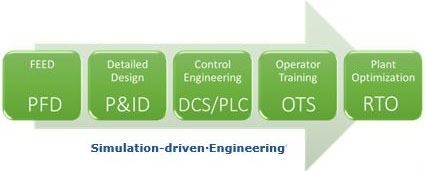




ARC has been covering Process Engineering Simulation Software (PES) for over two decades. Based on this knowledge, ARC analysts have developed a comprehensive set of criteria to help you select the best process engineering simulation solution available on the market.
The process engineering market is at an inflection point. Artificial intelligence, advanced analytics, and cloud computing are creating a disruption in this market. Cloud computing accelerates the opportunities for business improvement, enabling engineering organizations to create value from Industrie 4.0-type agility and digitization by Software-as-a-Service (SaaS) models. The market is moving to expand the scope of simulation beyond traditional engineering designs to asset lifecycle optimization. SaaS leverages the respective strengths of both engineering simulation and cloud infrastructure providers to transform simulation to a higher value agile service, to provide a scalable web access for legacy software, and to allow users to retain invaluable intellectual property (IP) for engineering.
 Implementing a process engineering simulation solution can be time consuming and costly, particularly if the solution selected is not compatible with other process engineering software. Today, the "platforming" of PES tools helps users create reusable workflows and automate data authoring on a broader platform for simulation. The new work processes created enable people to focus on more value-adding activities and shortening the time needed to design and optimize by moving from sequential to simultaneous engineering. These simulation platforms allow engineers to model multiple sets of "conditioned data" conditions within simulation environment. EPCs also care about validation of models, whereas in the past, validation was difficult and time consuming.
Implementing a process engineering simulation solution can be time consuming and costly, particularly if the solution selected is not compatible with other process engineering software. Today, the "platforming" of PES tools helps users create reusable workflows and automate data authoring on a broader platform for simulation. The new work processes created enable people to focus on more value-adding activities and shortening the time needed to design and optimize by moving from sequential to simultaneous engineering. These simulation platforms allow engineers to model multiple sets of "conditioned data" conditions within simulation environment. EPCs also care about validation of models, whereas in the past, validation was difficult and time consuming.
ARC has been researching the process engineering simulation market for over two decades and we know the issues:
This ARC Selection Guide will help you select a Process Engineering Simulation software solution for the future.
For more information on this technology guide or to discuss how we can help you, please contact us.




